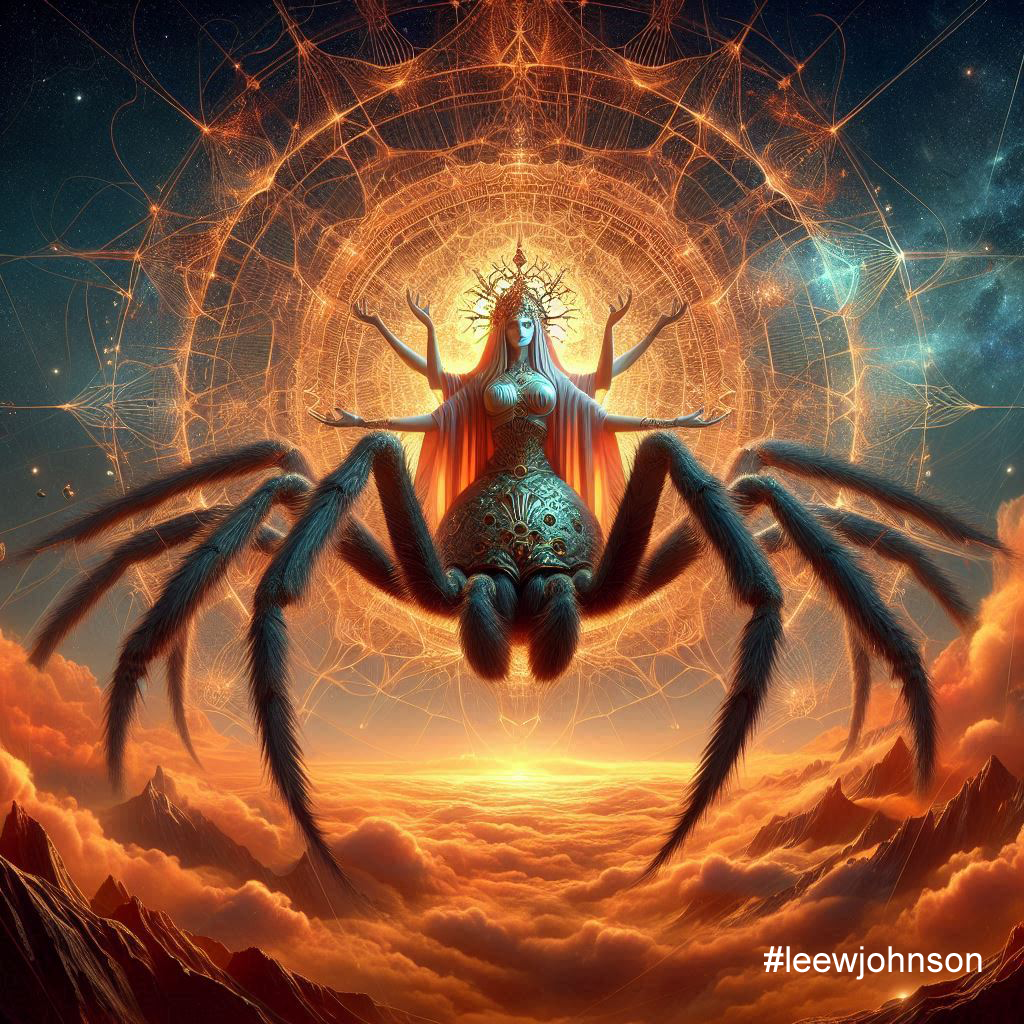Sepheranz

Correspondences:
Direction: Northwest (Primary); West
Colors: Red, Brown, Purple, Green, Pink
Elemental Attribution: Spiritus
Planetary Attributions (from Most to Least Attributed): Moon; Black Sun; Saturn; Uranus; Sun; Earth; Mercury
Musical dedication – Spider Goddess Sepheranz by Old Witch of Izalith
Found in Invocation of Sepheranz – Spider Goddess of Atlantis which is attributed to Temple of Ascending Flame which I assume comes from the book The Spider Goddess by Asenath Mason and Others.
She is also mentioned in The Scorpion God by Mark Allen Smith.
Both mentions above revolve around the Draconian Atlantean connection, which starts to overlay with Draconian Lizard people and gods that come from other galaxies and gets a little too David Icke for me at times, so I will be steering away from them and focusing more on the Greek aspect of the Spider Goddess that Sepheranz is more closely associated with, which is Arachne.
I think what needs to be remembered is that if we view the Cosmos as a complex series of energy filaments, all overlapping, joining, communicating, then we start to see this reality as a spiderweb. This then gets associated with a creator Spider Goddess, which makes so much sense, many mythologies have arisen around this particular entity with varied tales and names, probably including the masculine trickster spirit of Anansi from African tales. In fact, some time back, someone in my Youtube comments mentioned coming across some information that associated this with Hekate. Information overlaps and entangles itself.
But let’s have a look at Arachne. In terms of how this relates to what is said of Sepheranz however, I can’t be certain. Researching Sepheranz simply takes down the qliphotic rabbit hole. I suppose in regards to that the hubris of Arachne could be related to the illusion of the qlipha.
Hailing from the region of Lydia, Arachne was a mortal woman renowned for her weaving and embroidery skills. Her artistry was so extraordinary that her tapestries seemed almost alive, depicting scenes with such precision and beauty that observers were left in awe. However, her great talent led to great pride. Arachne’s fame grew, and with it, her belief that her skills were unmatched, even by the gods.
Arachne’s pride reached its peak when she boldly claimed that her weaving was superior to that of Athena, the goddess of wisdom, war, and crafts. Athena, known for her own exceptional weaving skills, could not ignore such a challenge. Disguised as an old woman, she visited Arachne and advised her to seek forgiveness from the gods for her hubris. Arachne, confident in her abilities, refused and insisted on a contest to prove her superiority.
Athena revealed her divine form and accepted the challenge. The contest commenced, with both working diligently at their looms. Athena wove a tapestry depicting the gods in their majestic glory, showcasing her skill and reverence for the divine. In contrast, Arachne’s tapestry, while technically flawless, depicted the gods in compromising and mischievous situations, highlighting their flaws and scandals.
Upon seeing Arachne’s work, even Athena had to admit its technical perfection. However, the content of Arachne’s tapestry was deemed blasphemous. Enraged by the mortal’s audacity and irreverence, Athena tore Arachne’s work to shreds. Overwhelmed by shame and guilt, Arachne tried to take her own life. Athena, in a moment of both pity and punishment, transformed Arachne into a spider, condemning her to weave for eternity. Arachne’s transformation into a spider ensured that her weaving skills would persist, albeit in a different form. Spiders, known for their intricate webs, serve as a reminder of Arachne’s talent and her tragic fate. The word “arachnid,” used to describe spiders, is derived from her name, cementing her legacy in the natural world.